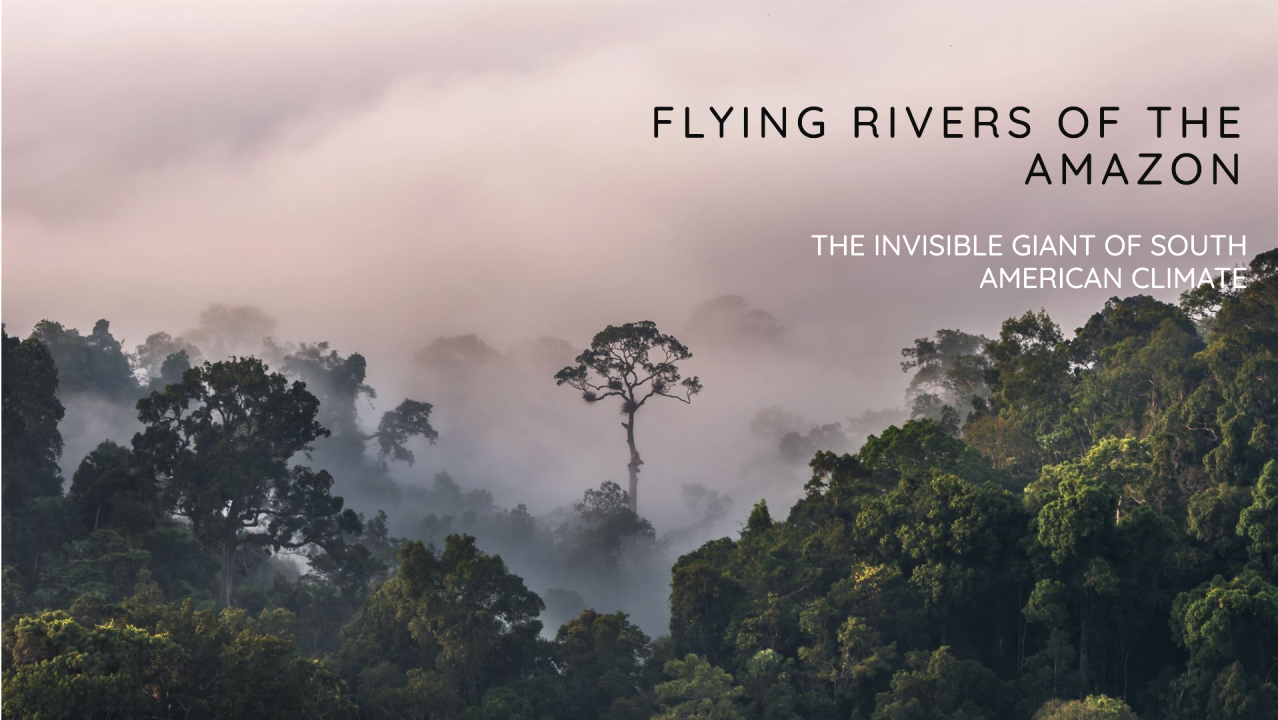Imagine immense rivers, not of liquid water, but of steam, flowing silently above our heads. These are the flying rivers of the Amazon, currents of moist air that transport billions of tons of water from the Amazon basin to other parts of the South American continent. A single tree in the Amazon can transpire up to 1,000 liters of water per day1, contributing to the formation of those atmospheric rivers that are essential for rainfall in many regions.
What Are Flying Rivers?
Flying rivers are massive currents of water vapor that move through the atmosphere, similar to the rivers we find on the Earth’s surface but invisible to the naked eye. They originate from the evapotranspiration of the Amazon Rainforest, where billions of trees release water into the atmosphere, forming a column of moisture that rises and moves like a river in the sky.
The Science of Flying Rivers
To understand the science behind flying rivers, we need to consider the water cycle in the Amazon. The forest receives about 2,400 millimeters of rain per year, and a significant portion of this water is transpired by the trees and returns to the atmosphere. It is estimated that a large tree in the Amazon can transpire up to 300 liters of water per day, contributing to the formation of these aerial rivers.
The Importance of Flying Rivers to the Climate
Flying rivers are essential for rainfall in many regions of Brazil and other South American countries. They transport moisture from the Amazon to southern and southeastern Brazil, where agriculture relies heavily on this water for irrigation. In addition, the moisture from these atmospheric rivers is critical for the water supply of cities and for the maintenance of local ecosystems.
The Fragility of the System
This system is extremely delicate and can be easily unbalanced by human activities such as deforestation and fires. Forest loss means fewer trees to transpire water from, weakening flying rivers and altering rainfall patterns. This could lead to droughts or floods in other regions, with devastating consequences for biodiversity and local economies.
Deforestation and Moisture Loss
Deforestation in the Amazon is a constant threat. Since the first European occupations in South America, it is estimated that 85 million hectares (equivalent to 13% of the original vegetation cover) have been lost to the forest. Most of this deforestation occurs in Brazil, where 60% of the Amazon is located1. In 2022 alone, 10,573 km² were devastated in Brazilian territory, the largest destruction since 2008.
The impact of deforestation is profound. The rainforest acts like a giant sponge, absorbing rainwater and slowly releasing it. When trees are cut down, this water-holding capacity is compromised. The forest can no longer attract and recycle rainwater, resulting in more extensive droughts and irregularities in rainfall.
The Point of No Return
Scientists warn of the “point of no return.” If deforestation continues, the Amazon could enter an irreversible state of degradation. One of the scenarios envisaged is the savannization of the forest, where the humid Amazon would be transformed into a kind of savannah, similar to the Brazilian Cerrado. This process would directly affect rainfall cycles, leading to more intense flooding and wildfires.
Changes in Hydrologic Cycles
A recent study reviewed 30 years of data from the Amazon Basin’s hydrological cycle. The results show that, in the north of the Amazon, the dry season has increased and the rainy season has decreased. In the south, there was an increase in temperature, a reduction in the amount of rainfall, and an increase in the dry season. These changes have significant impacts, including a higher likelihood of wildfires and more concentrated flooding.
The Impact of Human Activities
Human activities have a direct impact on flying rivers. Deforestation for agriculture and cattle ranching, urbanization, and pollution alter the natural balance. Climate change, driven by greenhouse gas emissions, can lead to an increase in the frequency and intensity of extreme weather events, affecting freshwater availability and the health of ecosystems.
Conclusion
This article highlights the importance of the Amazon’s flying rivers and the urgent need for their preservation. In the next article, we will explore the correlation between human-caused imbalances and variations in water availability across regions of Brazil, emphasizing the need for sustainable policies and collective action to protect this vital resource

Leave a Reply